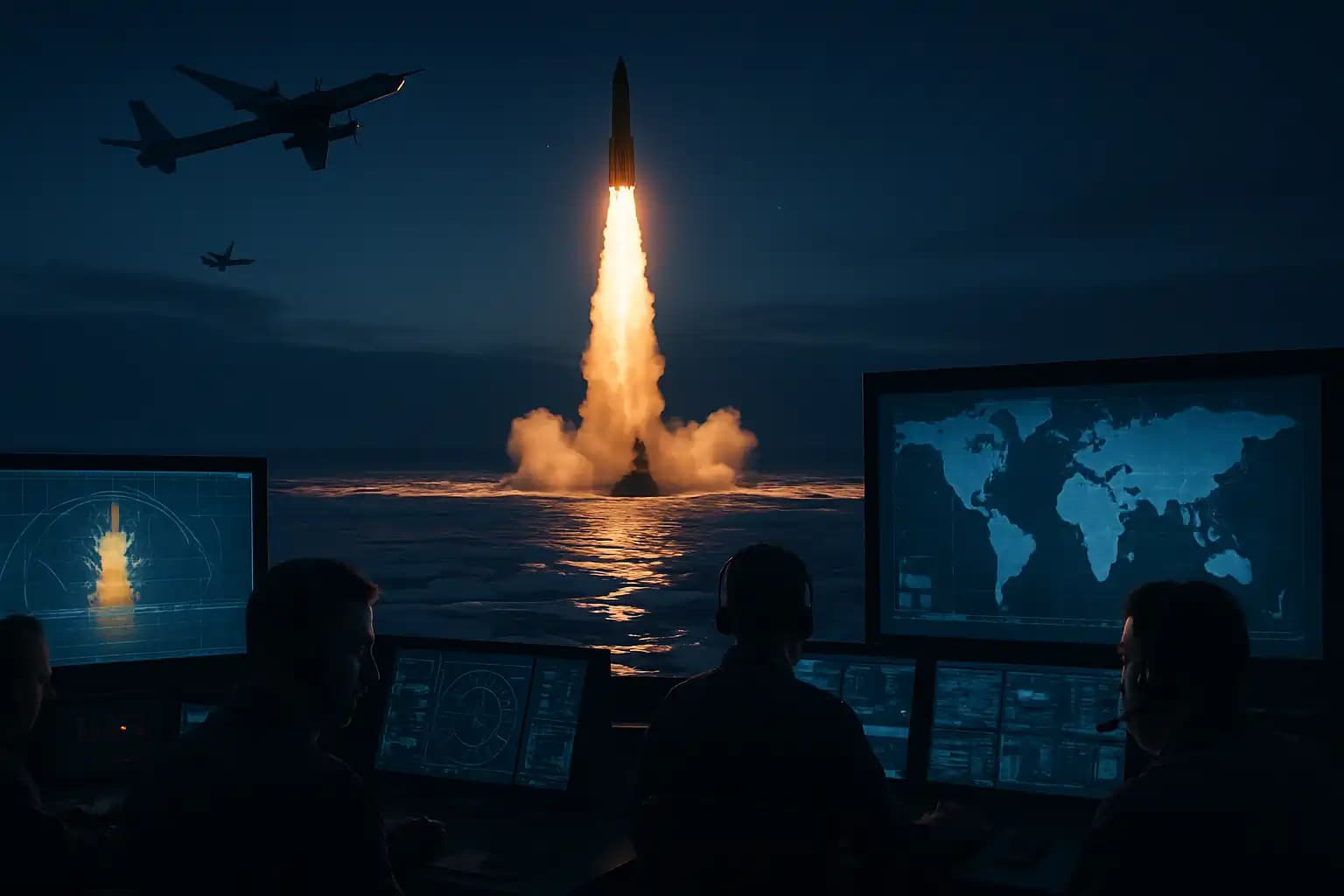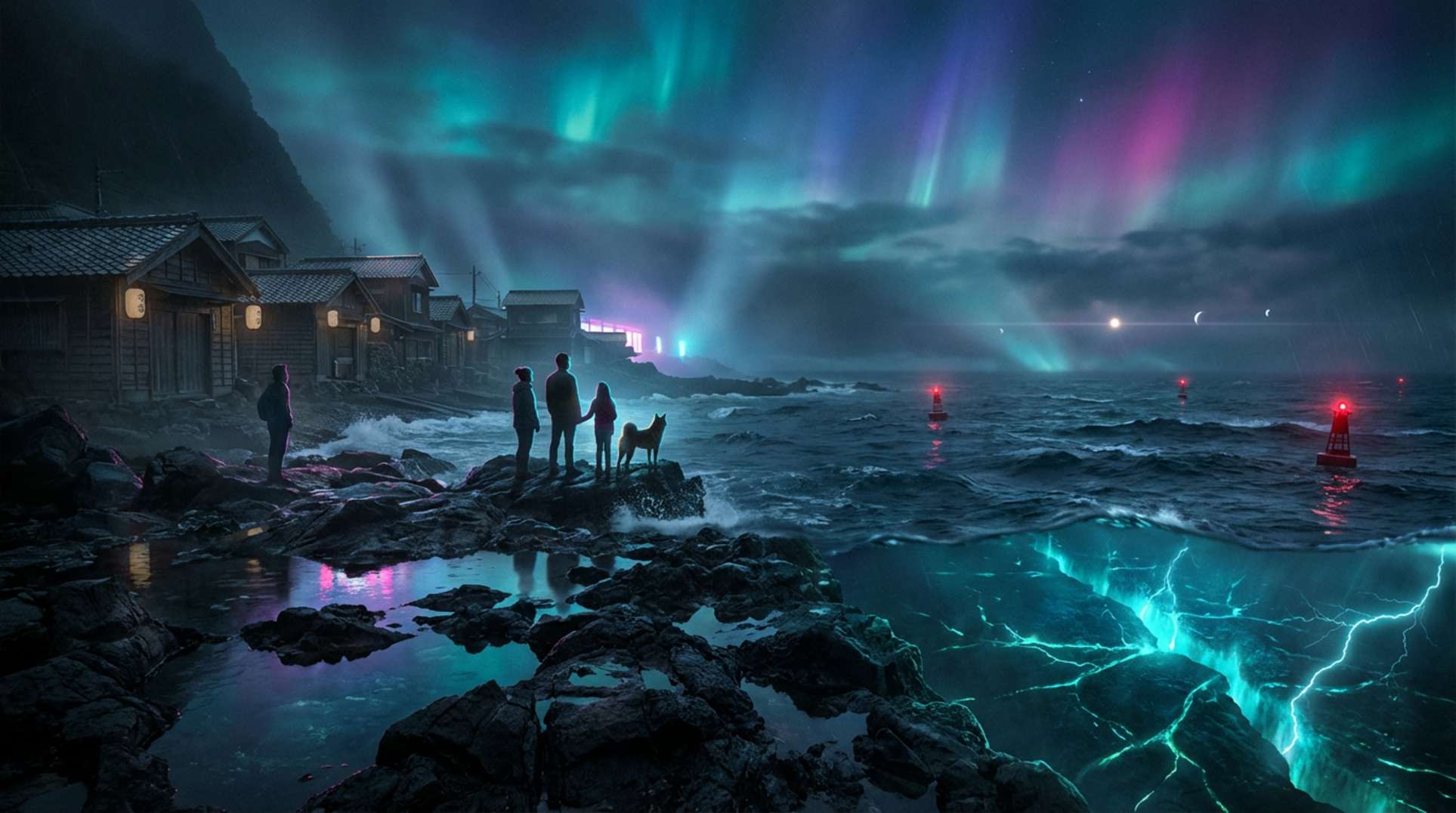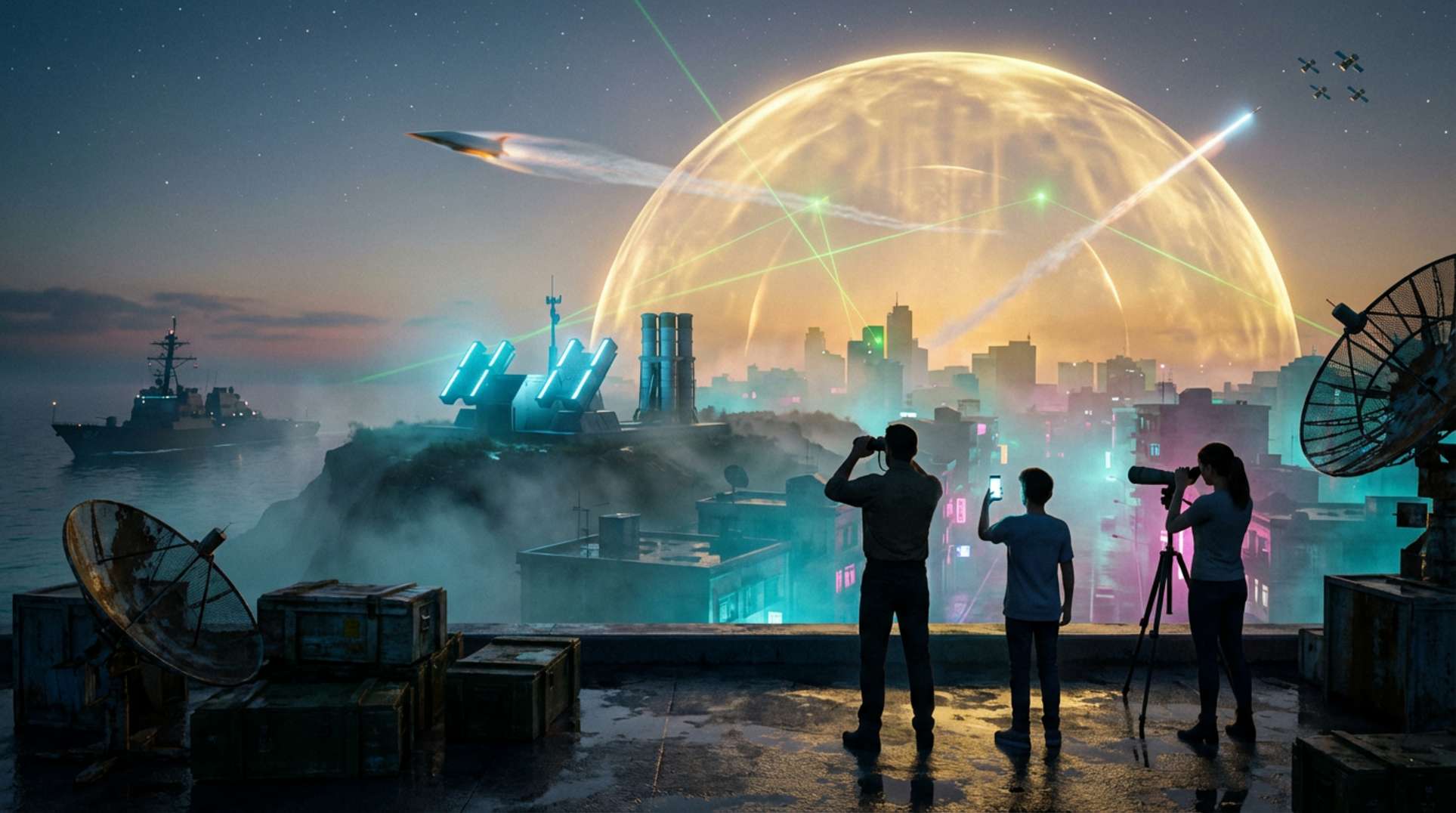The Kremlin excels at creating drama. In late October 2025, Russia executed a massive nuclear triad exercise—a drill involving ICBMs, submarine-launched ballistic missiles, and air-launched cruise missiles. Vladimir Putin personally oversaw the test, which sent a clear message: Moscow’s nuclear arsenal is ready for escalation. Many Western analysts view the timing and intensity of this drill—along with saber-rattling rhetoric from Kremlin officials—as indicative of the deteriorating arms control climate and the delicate balance sustaining the post–Cold War order.
Inside Russia’s Nuclear Triad Drill: Yars ICBMs, Sineva Missiles, and Tu-95 Bombers
This drill went beyond routine exercises and showcased every nuclear aspect. A Newsweek report confirmed the launch of a Yars ICBM from Plesetsk Cosmodrome, the deployment of Tu-95MS bombers with air-launched cruise missiles, and a Sineva missile shot from the Barents Sea. This carefully coordinated effort demonstrated the integration of Russia’s three strategic delivery systems, outlined in nuclear doctrine research. The drill assessed command structures and operational crews, reaffirming that Moscow’s deterrent is operational.
Western defense planners noted the symbolism. A parallel NATO exercise lingered, reflecting the artificial intelligence arms race as both sides displayed their escalation capabilities, following the collapse of arms verification protocols.
Medvedev’s Nuclear Rhetoric: “USA at War with Russia”
The hardware impresses, but the rhetoric chills. Dmitry Medvedev, deputy chair of Russia’s Security Council, asserted that “the United States is at war with Russia,” intensifying nuclear warnings and framing U.S. involvement as a pretext for escalation. His statements, featured in Reuters, reflect the Kremlin’s strategy of blending military displays with aggressive diplomacy. Analysts caution that Medvedev’s hawkish stance signifies greater frustrations related to Western support for Ukraine.
These signals arise from a broader narrative—they resonate through Moscow’s official channels, fueled by ongoing geopolitical tensions. The messaging exploits anxieties from escalation pathways discussed in WW3 risk briefings, along with insider dialogues about command structures, surprise drills, and counterforce strategies.
Frozen Arms Control: The New START Treaty in Crisis
The stakes are rising amid disintegrating arms control. The New START treaty, once a framework for nuclear limits and verification, has effectively been suspended by Moscow since February 2023. A January 2025 U.S. State Department report reveals that while Russia claims compliance with treaty limits, it blocks all American inspections and data exchanges, leaving Washington without key compliance assurances (State Department 2024 update). With the treaty due to expire in 2026 and no successor planned, the superpowers face a growing trust deficit and a looming deadline.
This “security vacuum” limits monitoring to national technical means—satellites, intelligence, and educated guesses. Such scenarios echo past arms control failures and recent assessments of global security instability, outlined in articles like summit risk reviews and reports related to defensive strategies, such as those found here on survival scenarios.
Brinkmanship, Deterrence, and Global Fallout: Why It All Matters Now
This situation involves more than mere saber rattling for nuclear strategists and concerned citizens. The nuclear triad’s integrity—its deployment across land, sea, and air—sustains second-strike capability, a crucial deterrent. It has also become political theater as trust deteriorates. U.S. and Russian officials warn that without verification transparency, accidental or intentional escalation is dangerously possible. This concern features prominently in discussions surrounding intelligence blind spots and the analysis of potential nuclear crisis scenarios seen in risk assessment platforms.
Amid these maneuvers and statements, the global community contemplates the worst-case scenarios. As the last remnants of arms control fade, ongoing coverage from Unexplained.co will follow the escalation of the arms race, signaling by world powers, and the critical decisions facing military and political leaders on both sides.




